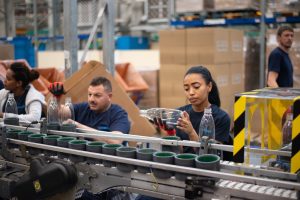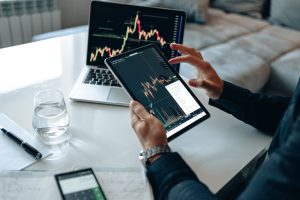By Mariana Costa, Marketing Specialist at PackIOT
More and more, throughout the time, we can hear urgent and important discussions being raised regarding climate change, global warming and sustainable development. Recently, Covid-19 has disrupted our lives and economies in an unprecedented way. Societies are now experiencing an immediate need to protect lives and livelihoods which heightens the urgency of following a strict and necessary climate agenda.
This has not come up as just a moral question but also as serious danger for the global ecosystems and economy if nothing is done and implemented systemically. With this urgency, artificial intelligence has been pointed out as an important and key tool to adopt responsible business practices. But not only that… When we envision a more sustainable and lower carbon future, we can think about different routes and possibilities to achieve these goals. One is investing in research and development and in the improvement of existing technologies like AI; the other is betting on using renewable energy in order to produce materials. But there is a third one called aluminium.
1_AI: Optimization For The Environment
Artificial intelligence that is properly incorporated into the ecosystem can be the way towards a sustainability revolution, aligned with Industry 4.0. There is a new world of emerging opportunities powered by new technical developments. For example, it is now becoming very common to adopt systems that analyze and interpret meaningful data. This can have a great impact on the optimization of work and manufacturing processes, for example.
Having an AI tool that is ready to capture data and transform it into useful information, increases the transparency across sectors inside the factory and, consequently, the agility in decision making.
When we look into solving challenges and problems that are reflected across the business, in all areas, transparency is key. “But weren’t we speaking about sustainability?”, you may be wondering. Well, yes and it is exactly for that reason that we need transparency first. When we think about tackling our sustainable practices inside an organization, before we need to know where we are failing or, at least, not doing enough. If we put this perspective into a manufacturing plant, this can come up as: energy consumption, capacity of machines and scrap rates, for example.
Indeed, the information that arises during the production process, supported by an installed AI system, can be key to answer all those questions and more. We can even go as far as needing to start developing sustainability-related risk assessments of company locations, optimize materiality and stakeholder analysis besides the general calculations. This is a very positive result of comprehensive digitalization when we make sure that all the data needed is increasingly and transparently available across the organization – it just has to be harnessed with intelligent algorithms.
In fact, across different models of organizations, these systems are already being used for the purpose of environmental protection. Think of global climate models for predicting problematic weather forecasts, smart farming for sustainable agriculture or intelligent electricity grids to regulate energy consumption. Intelligent technologies have already been implemented in these fields so why not in manufacturing?
2_Aluminium Can Help Build Circularity
Aluminium has amazing qualities and can be key to build a circular economy. Today, 75% of all aluminium ever produced is still available due to its infinite recyclability without compromising the quality of the material.
Despite the Covid-19 impact on the global economy, the demand for aluminium is expected to continue to increase and, with it, the emissions if we do not act on time (Image 1). According to some data available, 74% of global primary aluminium is produced with non-renewable energy.

Image 1: Global CO2 emmissions from key materials production (Billion tonnes of CO2 per year). Source: Ellen MacArthur Foundation
If we are going to prioritize ESG principles (Environmental, Social, and Governance), producing aluminium with less waste and lower level of emissions becomes the cornerstone of the supply chain for those producers. The packaging sector has already started to look at ways to start reducing the carbon footprint and ecological footprint of the production cycle. Still, we are failing. Among all these aspirations, there isn’t still a singular and unified approach in the industry to tackle this need in the sector.
Implementing truly sustainable practices in the industry is a groundbreaking and challenging task for any company. Fortunately, we have been seeing some initiatives, such as the Mission Possible Platform, from the World Economic Forum, which aims to target key sectors, such as the aluminium, to accelerate its decarbonization efforts and sustainable initiatives. Partnerships and collaborations are key on this journey but this pathway is never a one-size-fits-all solution, which adds to the challenge. The reality differs across regions and producers. Nevertheless, the post Covid-19 might present a key opportunity for a green recovery and for the prioritization of circular practices, backed by innovative technology, engineering and clean power.
We will keep seeing an increase in demand for low-carbon products, such as aluminium. So, now it’s the time. The time to invest in innovation, technology and key partnerships. This way, there is a chance we will be able to meet the challenge.




